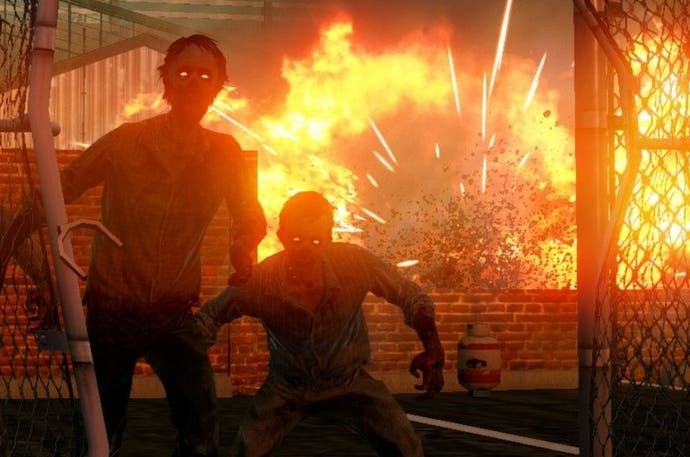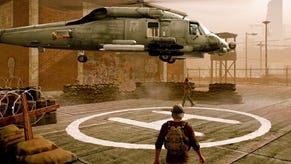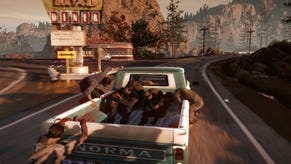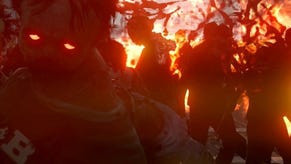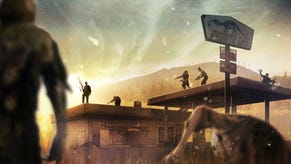State of Decay: Lifeline review
No man's land.
Prone to crashes, stuttering drops in frame-rate, juddering animations and a general imprecision of control, Undead Labs' State of Decay is one of the untidiest video games of recent times. This new chapter, set within the wearyingly familiar context of post-apocalyptic America, does nothing to level the technological bumps; you even need to restart the entire game whenever you want to switch between this latest add-on and previous chapters.
It remains, however, one of the most vibrant and interesting pieces of interactive zombie fiction yet made. It's a game that reinforces its theme with a raft of interlocking systems that communicate the fatigue and terror of survival in the aftermath of a western society's collapse far more effectively than most of its burnished, Hollywood-esque cousins.
The drama has moved to the wrecked city of Danforth, an LA-style metropolis circled by a working freeway. You play as the members of Greyhound One, a US Army unit that's been sent to the zombie-infested city to rescue key personnel who might be able to advance the effort to find a cure for zombification.

Tension derives from the city's remaining survivors feeling abandoned by the army in favour of these VIPs. A pirate radio station broadcasts anti-military rhetoric, blasting your team for ignoring the plight of ordinary citizens. As you pursue the main missions, callers dial in to complain over the airwaves. You're free to stage impromptu conscience-clearing rescues if you're moved to - with the sizeable drawback that any non-essential persons you return to your base of operations will add to the already considerable drain on your resources.
Your base is an unfortified car park that's bordered by a chicken-wire fence. Here your tiny platoon holes up, heading out to scavenge the local abandoned shops and warehouses for food, medicine and building materials that can be used to build structures to buttress your position and better look after the community of survivors. Lifeline introduces a slew of new fortifications to State of Decay. Traps such as mines and distracting fireworks can be planted around the perimeter. A landing zone will facilitate supply drops by helicopter while an Ops Center will enable you to develop tactics and research. Build a generator and you can provide power to advance the functions of your shantytown, while latrines will bring some much-needed sanitation to stave off sickness.

Your survival in the city has an enforced rhythm. You head out from the base, usually with one or two accompanying soldiers for back-up, and scavenge for supplies. While you're off working, zombies gather around your base and, every 30 minutes or so, mount a siege assault. Fail to provide your soldiers and other assorted survivors with beds, ammunition and food for strength and they will struggle to fend off these waves of zombie attacks. Moreover, each high-value target that you rescue must survive one siege before they can be airlifted to safety, a stipulation that provides a strong incentive to return to the base during a siege in order to help protect the community.
There are no fail states in Lifeline: if a rescued target dies during a siege or en route to the base, you must simply carry on regardless. Likewise, you don't play as any single character, instead rotating control of your troops. Take one soldier out on a mission and, when they return hurt or fatigued, you can switch to a colleague in order to give the first character a chance to recuperate.
This absence of a central protagonist allows the developers to place responsibility for your troops fully in your hands; they're not forced to keep any character alive for the sake of the plot so, in effect, whatever happens is down to you. If a leader dies in battle, then you must absorb the loss, grieve and move on to the next character, building up their strength and proficiency from scratch. It's easy to fail a character by putting them in a situation for which they are under-prepared.

So Lifeline is a game about custody and leadership, about providing for your family. The sense of anguish when a crowd of zombies breaks through your defences and wrestles a well-loved comrade to the ground is severe. Often you'll hurl your current character into the milieu, thwacking a spade or blind-firing your weapon in the hope of shooing the attackers. The dismay you feel when you fail in this endeavour and watch your friend's body torn apart is keen. That your only possible interaction thereafter is to salvage their backpack from the pulpy remains is cold tragedy.
Lifeline's military theme fits State of Decay's systems snugly - but there are problems here too, beyond the game's unstable engine. This is a much more challenging proposition than the original game; the incoming zombie sieges scale in difficulty dramatically as the hours pass. Towards the end of the game, all but the best-prepared players will likely lose a few characters during every siege. The rhythmic structure of scavenging and sieges also allows Undead Labs to draw the main plotline out for too long. Key missions trickle down, and in time the repetitive nature of these exercises, which are principally fetch-quests, gets tiring.
Nevertheless, there is still something wonderful about Undead Labs' approach to survival horror. As you make the frenzied dash from a warehouse to the nearby 4x4, its bonnet glistening with blood, the fight/flight instinct is real and only heightened by the knowledge that you have a group of dependants, some of whom are sick and wounded, relying on the delivery. State of Decay's imagination and ambition do not excuse the presentational shortcomings, but it's easier to celebrate an interesting yet crude game than one that's beautiful and dull.
